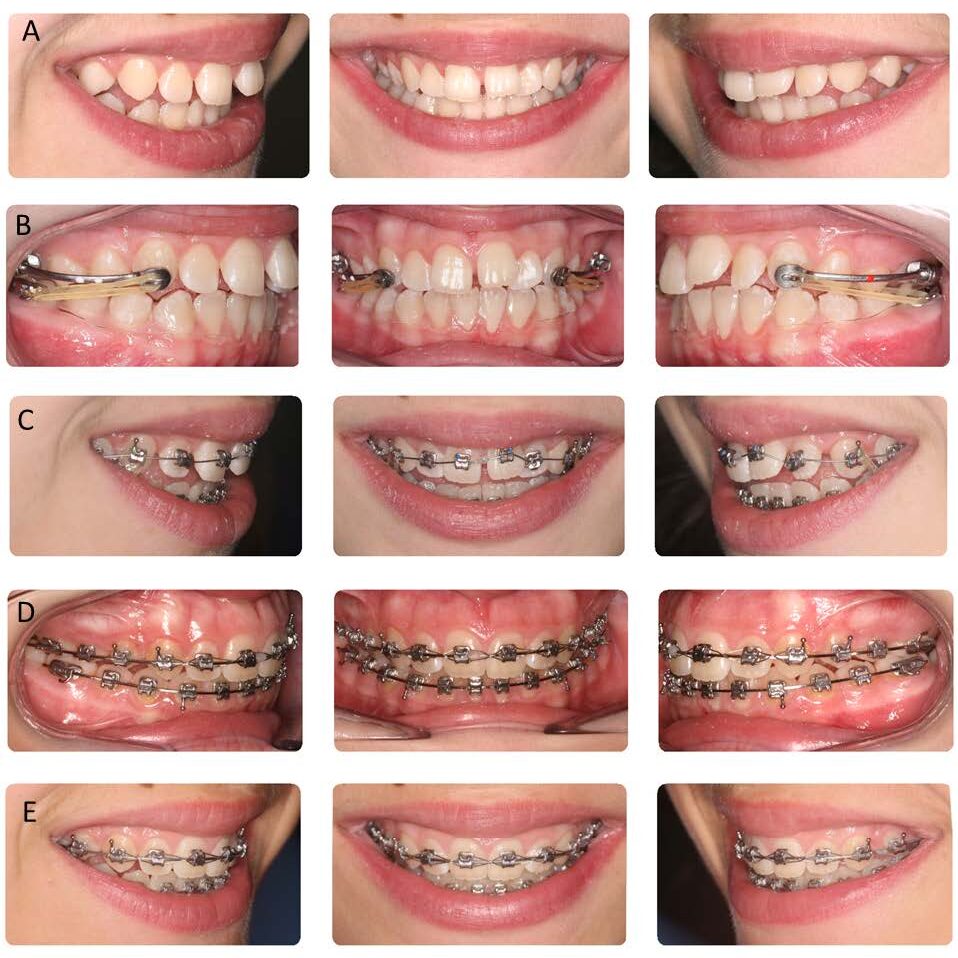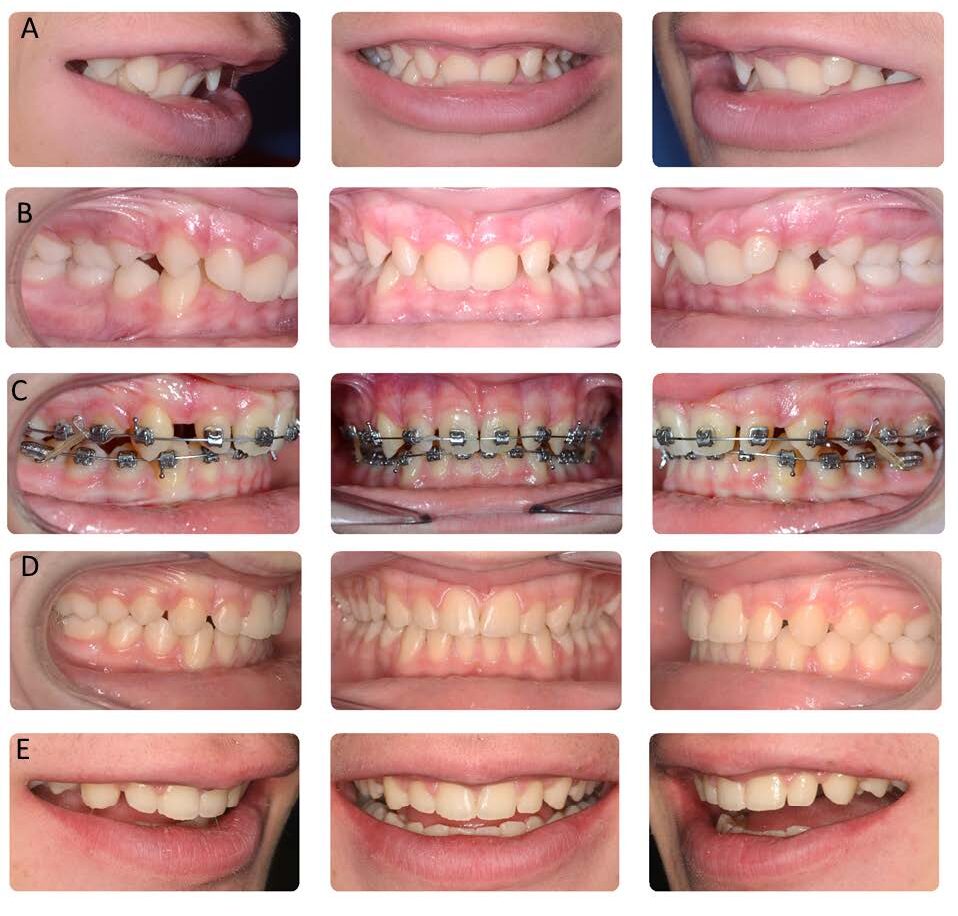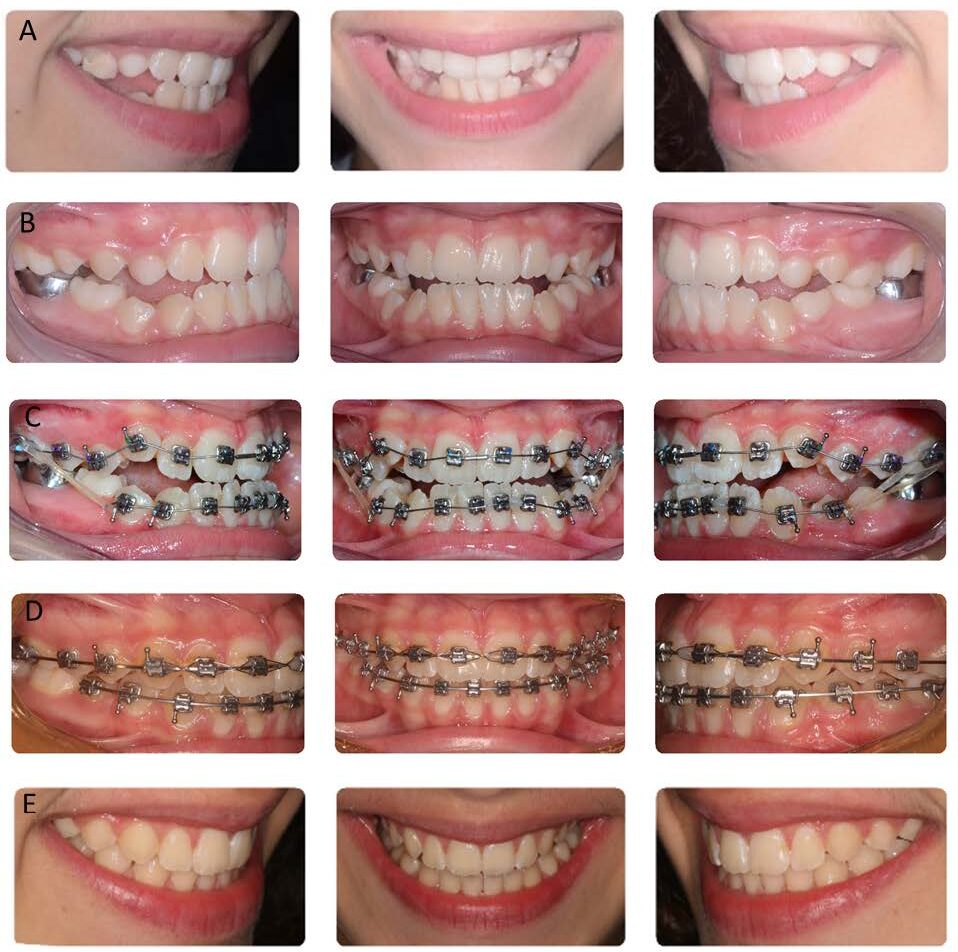The Six Keys for Optimal Quality Perception and Successful Orthodontic Service
As medical specialty in the healthcare service, quality perception (P) is essential to obtain satisfaction (S) when the orthodontic journey meets patient’s expectation (E). The relationship among these three variables is showed by the following equation [1]:
S = (P – E) >= 0
The three main relative scenarios are: 1) P<E, then S < 0, dissatisfaction; 2) P=E, then S=0, satisfaction; 3) S>0, then P>E, Satisfaction Beyond the Expectation (SBE).
The consequent considerations are:
1) unrealistic or unmet expectations always lead to dissatisfaction because the quality perception will always be smaller than waits;
2) S=0 must be the minimum goal, that is when orthodontic problem is solved by effective orthodontic treatment;
3) patients who, other than solving malocclusion, experience efficient and people-oriented orthodonticjourney, will always reach SBE.
These patients most likely will be fans of the orthodontic team, referring other patients enthusiastically.
Therefore, a well-organized and structured practice is needed to provide a successful orthodontic service [2], which should be able to solve malocclusion effectively and, at the same time, to obtain
high quality perception by efficiency. Efficiency in this paper will be considered the ability to reach the visualized objectives in the most predictable and comfortable ways and shorter treatment time.
Importantly, the premise for an optimal quality perception is based on creating and maintaining a relationship of mutual trust among all the people involved in the orthodontic journey [2].
The main stages and their related steps to reach both the minimum goal (S=0) and SBE goal (S>0) are described as follows in a chronological order.
First Visit and Treatment Plan
Minimum Goal
While parents/relatives are waiting for in the consultation room, perform the visit in the chair room, collecting also all the images needed, pictures and x-ray.
Also, take impression by intraoral scanner because the digital impression was referred significantly more comfortable than conventional impression [3].
At the end of the visit journey, by using “why, how, what” process [2] explain the malocclusion which needs to be corrected and show the visualized treatment objectives (VTO). Show some treated cases to help the patients in visualizing the goals and the need of long-term retention.
Help patient to comprehend the treatment options by a synoptic table which reports the advantage and disadvantage of each other.
Give a branded package including images, diagnosis, treatment plan, informed consent and the proposal treatment fee, specifying carefully all the services included and the possible tailor-made terms of payment. The last point should be assessed by the back-office employ who should always be present at the consultation meeting, by listening and assisting the family/relatives, and also to know, then to fulfil their extra-clinical needs.
If a deeper case study is necessary, schedule another meeting, even online, for the case discussion. In the case of on-line appointment, send all the branded package by email after the case discussion.
At the end of the case presentation, always schedule an appointment to start treatment or to receive a feedback.
When the mutual acceptance is confirmed, congratulate with them for their contribution to the public health undergoing orthodontic treatment.
Treatment Protocols and Patient’s Experience
Minimum Goal
Meet patient’s expectation by solving malocclusion effectively, with no aesthetic decline, no residual CO-CR discrepancy, keeping periodontics healthy with long-term stability [4].
Improve the post-treatment outcomes by developing the orthodontic skills in order to treat patients at the best, attending postgraduate orthodontic programmes [5] aimed to improve the expertise.
SBE Goal
Be always available by listening, assisting, supporting patients and families, exploiting at the best the saved time.
Visualize the final tri-dimensional position of the upper central incisors as the crucial variable influencing the final aesthetic outcomes, because it establishes the smile arc display and tooth exposure [6]. In this view, perform an indirect bracket positioning guide [7] which may help in planning and obtaining an early smile arc protection [8] by an efficient and effective indirect bonding technique (Figure 1).

Figure 1: Upper incisors flaring and crowding, reduced upper incisor display and left class-2 subdivision are shown in a 13-years old female patient (A). The sagittal over correction of upper left
class-2 subdivision, with the consequent space recovering, was performed by using bilateral upper 3-to-6 segmental bars, lower essix, full time 8 oz 3/16 class-2 elastics on the left and full time 6
oz 3/16 class-2 elastics on the right, in the first 4 months (B). Upper and lower MBT-prescription straight-wire appliance, .014 NiTiHA arch-wires and early anterior class-2 elastics (2 Oz, 3/16;
full time), were applied in one step (C). Notice 1-mm over correction of upper central bracket position, the improvement of both upper incisors display and smile arc after the levelling occurred
in the next 5 months by sequential .016x.022 .019x.025 NiTiHA (D, E).
Start treatment at the right time to be efficient, taking into account of several variables: (1) teeth eruption in the late mixed dentition, especially upper canines and second molars; (2) the pubertal
growth spurt; (3) the psychomotor maturity to undergo orthodontic treatment. The synchrony of all previous variables usually allows starting treatment at the best time.
By using Indirect bonding technique, also focus on the levelling of the marginal ridges among the premolar and molars in order to reduce the need of bracket repositioning [7], causing unnecessary prolonged treatment time.
Perform one-step upper and lower indirect bonding because it allows to have significant chair-time saving and also to use early interarch mechanics [9,10]. In the bonding stage, also use strategic buildup (e.g. turbos) in order to have disarticulation of both arches and an early vertical control [11] (Figure 2). Both early inter-arch mechanics and vertical control may help in improving efficiency.
Once the upper and lower bonding is performed, give a branded package with the instrument for brushing and cleaning, and also send a video where the instructions are reinforced.
In non-extraction cases with sagittal discrepancy, use a sagittal-fast strategy (SFS) in order to exploit the initial best patient’s compliance by a minimal invasive and comfortable strategy (Figure 3). The SFS also should allow to transform a sagittal malocclusion into a class I malocclusion in 3-6 months, which should be finished by further efficient aligning, levelling, space closure and settling stages. Even in extraction cases, apply simplified mechanics [4] and use mini-screws when they are indispensable to reinforce absolute anchorage and/or when the conventional mechanics are unable.
When the debonding stage is approaching, schedule a meeting with the parents in order to show the advancement of the case and the pictures which were taken in progress. This is the time to let the family be aware of both the improvements and the reached objectives. It is also time to explain again the strategies for upper and lower retention.
At the debonding stage, take all the final records and hand the retention appliances at the same day together with all the written instruction to prevent relapse. At the same time, give a book with the orthodontic image history to show the reached results; then, plan the retention appointments.
Ask web recension, written feedback or a video testimony about the reached objectives and the experience lived during the entire orthodontic journey.
Discussion and Description of the Keys Since the current evidence does not support the clinical use of aligners as a treatment modality that is equally effective to the gold standard of
braces [12], in this paper the clinical and extra-clinical factors which contribute to reach SBE focused on orthodontic journey performed by using fixed appliance. However, most of the principles enounced in

Figure 2: Bilateral class-2 div-2, deep-bite and over erupted upper incisors are shown in a 13-years old male patient (A, B). The sagittal correction of bilateral class-2 div-2 were performed by
using bilateral upper 3-to-6 segmental bars, lower essix, full time bilateral 8 oz 3/16 class-2 elastics in the first 5 months. Upper and lower MBT-prescription straight-wire appliance, .014 NiTiHA
arch-wires, early posterior class-2 elastics (2 Oz; 3/16; full time) and upper incisor turbos were applied in one step (C). Notice 1-mm over correction of upper central bracket position and the
posterior open bite created to allow vertical correction, which was obtained by posterior extrusion (D) and anterior intrusion (E), in the next 14 months.

Figure 3: Reduced upper incisor display, bilateral class 3, edge-to-edge incisor relationship, open bite tendency and upper and lower crowding are shown in an 11-years old female patient (A, B).
Upper and lower MBT-prescription straight-wire appliance, .014 NiTiHA arch-wires and early class-3 elastics (2 Oz, 3/16; full time), were applied in one step after having maintained lower E space
by lingual arch (C). Notice 1-mm over correction of upper central bracket position, performed in order to improve upper incisors display, smile arc and open bite tendency. In the next orthodontic
stages, occurred by using sequential .016x.022, .019x.025 NiTiHA, .019x.025 SS, alignment, levelling, arch width coordination, space closure and settling completed the treatment (D, E).
this paper are also applicable in orthodontic journey performed by clear aligner therapy, unless the reduced predictability of tooth movement affects the orthodontic outcomes and patient’s expectation. The following key factors include early correction of transversally discrepancy and/or reverse overjet whom cases are eventually affected [13,14].
The first key for optimal quality perception is described in the following sentence: “the first visit is everything”. Therefore, the families coming into the office for the first visit will search for all
positive confirmation during the journey if the first impressions will be optimal, increasing the chances of mutual acceptance of the treatment plan; the reverse is also true. In addition, the use of “why, how, what” process [2] contribute in helping to visualize the objectives and in understanding the proposed journey and the devices chosen.
The second key which contributes in obtaining SBE is the chairtime saving. This variable impacts the quality perception by different mechanisms. The more is the time saving: (1) the more is the available time for listening patient’s feedbacks and for communicating with them; (2) the more is the perceived comfort due to the efficiency of each performance; (3) the less is the perception of treatment duration, due to the reduced time spent in the entire journey. Furthermore, timesaving affects the economic sustainability of the orthodontic practice because the chair-time expresses the fixed costs of the orthodontic treatment. Therefore, the more is the entire chair-time, the more is the fixed costs to supply the orthodontic service [2].
The third key influencing the quality perception is the assistance given to families by supplying tools and information during the entire orthodontic treatment, every time it is possible. The mechanisms which allow to improve the quality perception is related to receive unexpected useful service oriented to sincere interest in the patients well-being, increasing the P value more than their E value [1].
The fourth key is the treatment timing. This factor is fundamental to perform an efficient orthodontic treatment because it impacts on the duration of the entire journey. As mentioned above, the
best timing to start treatment is when the synchrony among the eruption of upper canines and sevenths, the pubertal spurt and the psychomotor maturity is present. On the contrary, early treatment, when it is not indicated, always leads to prolonged treatment duration, reducing efficiency, increasing number of appointments with more costs.
The fifth key which helps in reaching SBE is the use of simplified and minimal invasive mechanics in relation of the complexity of the case. The use of minimal invasive devices, obviously improves the patient’s experience by two main mechanisms: (1) more comfort; (2) chair-time saving. Furthermore, the use of simplified mechanics impacts on management control, because both fixed and variable costs are reduced by chair-time saving and less number of devices applied, respectively.
The sixth key for optimal quality perception described in this paper is the use of early vertical and sagittal inter-arch mechanics with the priority to solve sagittal discrepancy fast and to fix the
three-dimensional position of upper incisors at best, obtaining both the correction of malocclusion and optimal aesthetic perception contextually. The achievement of the mutual accepted visualized treatment objectives, together with an optimal upper incisor display, always lead to a satisfaction for the reached outcomes.
Therefore, the six keys for optimal quality perception and successful orthodontic service may be summarized as follows:
1. The first visit is everything
2. Save and spend time to inform, assist, support
3. Explain and supply all digital and physical supporting tools
4. Start treatment at the best timing
5. Use the most simplified and minimal invasive mechanics
6. Solve sagittal discrepancy fast, fix upper incisors at best
In conclusion, the more the patient’s satisfaction is researched, the more well-structured orthodontic service, expertise, trained human resources and systematized processes are needed. The six keys shared in this paper may contribute in increasing the quality perception and reaching SBE.
Fabio Ciuffolo*
Department of Orthodontics, Ciuffolo Ferritto Orthodontic Clinic, Città S. Angelo, Italy
*Corresponding author: Fabio Ciuffolo, Department of Orthodontics, Ciuffolo Ferritto Orthodontic Clinic, Città S. Angelo, Italy
References
-
- Fornell C, Johnson MD, Anderson EW, Cha J E Bryant E (1996) The American Customer Satisfaction Index: nature, purpose and findings. J Mark 60: 7-18.
- Ciuffolo F (2021) The key factors for future orthodontic prosperity: A commentary paper. APOS Trends Orthod 11: 169-173.
- Yilmaz H, Aydin MN (2019) Digital versus conventional impression method in children: Comfort, preference and time. Int J Paediatr Dent 29:728-35. [crossref]
- Arnett GWA, McLaughlin RP (2003) Facial and dental planning for orthodontists and oral surgeon. 1st ed. Philadelphia: Mosby (Elsevier).
- Nur Yilmaz RB, Nalbantgil D, Ozdemir F (2016) The effect of awareness of American Board of Orthodontics Criteria on treatment outcomes in a postgraduate dental
clinic. J Dent Educ 80: 1091-1097. [crossref] - Sarver DM (2001) The importance of incisor positioning in the esthetic smile: the smile arc.
Am J Orthod Dentofacial Orthop 120: 98-111. [crossref] - Ciuffolo F, Tenisci N, Pollutri L (2012) Modified bonding technique for a standardized and effective indirect bonding procedure.
Am J Orthod Dentofacial Orthop 141: 504-509. [crossref] - Pitts TR. (2017) Bracket Positioning for Smile Arc Protection. J Clin Orthod 51: 142-156.
- Ciuffolo F. (2016) Contemporary contribution of orthodontics to the public health: A brief commentary paper.
Dent Oral Craniofac Res 2: 1-2. - Li Y, Mei L, Wei J, Yan X, Zhang X, Zheng W, Li Y (2019) Effectiveness, efficiency and adverse effects of using direct or indirect bonding technique in orthodontic patients:
a systematic review and meta-analysis. BMC Oral Health 19: 137. [crossref] - El-Bokle D, Abbas NH (2020) A novel method for the treatment of Class II malocclusion. Am J Orthod Dentofacial Orthop 158: 599-611.
- Papageorgiou SN, Koletsi D, Iliadi A, Peltomaki T, Eliades T (2020) Treatment outcome with orthodontic aligners and fixed appliances: a systematic review with meta-analyses. Eur J Orthod 42:331-43. [crossref]
- Mutinelli S, Manfredi M, Guiducci A, Denotti G, Cozzani M (2015) Anchorage onto deciduous teeth: effectiveness of early rapid maxillary expansion in increasing dental
arch dimension and improving anterior crowding. Prog Orthod 16: 22. [crossref] - Baccetti T, McGill JS, Franchi L, McNamara JA Jr, Tollaro I (1998) Skeletal effects of early treatment of Class III malocclusion with maxillary expansion and face-mask
therapy. Am J Orthod Dentofacial Orthop 113: 333-343. [crossref]
Citation:
Ciuffolo F (2022) The Six Keys For Optimal Quality Perception And Successful Orthodontic Service. J Dent Maxillofacial Res Volume 5(1): 1-5



